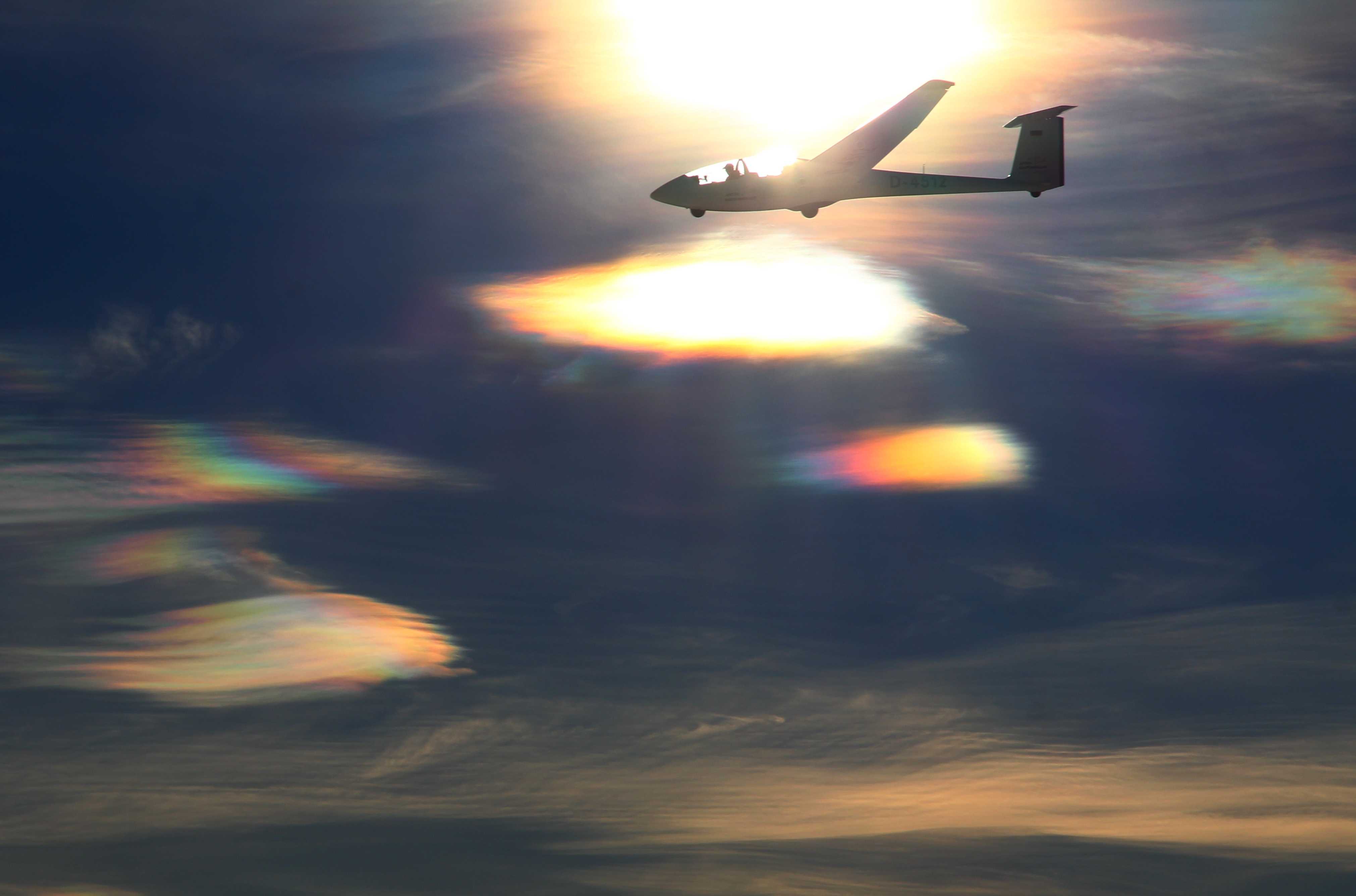Cirrocumulus
(Section 2.5.2.2)Cirrocumulus most frequently occurs above 3 km (10 000 ft) in polar regions, 5 km (16 500 ft) in temperate regions and 6 km (20 000 ft) in tropical regions.
Below the cloud. Viewed from below, Cirrocumulus appears as a thin patch, sheet or layer, composed of very small, rounded elements. The elements may be merged or separate, and their horizontal bases are all at the same level. They appear white with or without shading.
Within the cloud. Cirrocumulus is almost exclusively composed of ice crystals. Supercooled water droplets may form, but these are usually rapidly replaced by ice crystals. The observer has the impression of flying in a thin fog. Light turbulence may be encountered, except in Cirrocumulus castellanus where it can be stronger. The only halo phenomenon that may be observed is the 22° halo.
Above the cloud. Viewed from above, Cirrocumulus elements have soft outlines resembling cotton wool. They may appear similar to Cumulus humilis clouds in shape and size. If Cirrocumulus castellanus, the elements have a common base and are more vertically developed. No subsun (undersun) is observed.




